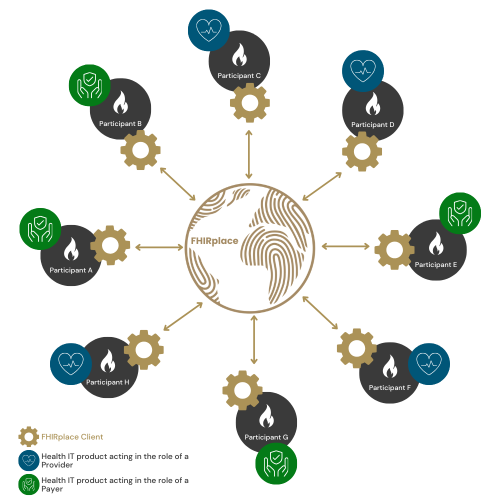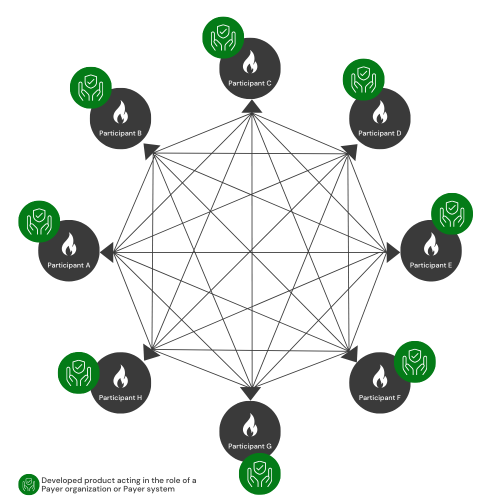Among the numerous HL7® Fast Healthcare Interoperability Resources (FHIR®) use cases available, the Payer to Payer (P2P) data exchange and Electronic Prior Authorization (ePA) FHIR initiatives hold some of the greatest potential to optimize the patient care workflow. As a result, The Center for Medicare & Medicaid Services (CMS) has placed a significant amount of focus on ensuring that the healthcare sector adopts both FHIR-based processes. The CMS has worked toward this by enforcing multiple FHIR based mandates, including but not limited to the “CMS Interoperability and Prior Authorization Final Rule” and “The Patient Access Final Rule,”, both of which mandate the FHIR standard at different stages of the patient care workflow.
With the eventual widescale adoption of FHIR now set in motion, the most significant determinant of these initiatives’ success will hinge upon healthcare’s willingness to adopt robust FHIR interoperability testing practices. If organizations choose not to embrace these testing practices, the complex workflow of emerging FHIR use cases could cause countless connectivity issues as organizations struggle to fix multi-party interoperability difficulties within real-life production environments.
To avoid this outcome, Drummond has developed FHIRplace, which specializes in the pre-production testing of a group’s interoperability efficacy before their systems go into production. This functionality will enable healthcare organizations to bring real-world scope to simulated testing parameters so that participants can work through any interoperability issues before participating in complex multi-party FHIR use cases. To ensure its efficacy, FHIRplace will be equipped with specific testing protocols for P2P data exchange and ePA, so that participants can maximize their preparedness by simulating realistic FHIR use cases that are catered to healthcare’s most important workflows.
Let’s review these FHIRplace processes to get a better understanding of how effective FHIRplace’s testing protocol is for critical use cases like P2P and ePA.
Testing Electronic Prior Authorization via FHIRplace.
Due to the importance of FHIR based ePA in healthcare, FHIRplace testing protocol has been carefully designed to recreate the same real-life data exchange parameters that its users will experience at scale. This will naturally address and resolve any interoperability issues that may arise. To understand what this testing process would look like, please view Diagram 1 below to see each participant’s role within our standard ePA FHIRplace interoperability test.

In the testing process, participants typically play either a payer or provider role. However, some commercial FHIR platform products may play a dual role if they support the provider and payer functionality for ePA. In ePA, participants have asymmetric roles: a provider’s role in the process is different from the payer’s role. A provider initiates the process, the payer responds, and Coverage Requirements Discovery (CRD), Documentation Templates and Rules (DTR), and Prior Authorization Support (PAS) subprocesses ensue, depending on the scope of the test case being executed.
Typically, providers will have EHRs with embedded FHIR technology, although in some cases they could have a distinct commercial FHIR platform loosely coupled to their EHR. In other cases, a provider end-user organization could bring their bespoke pre-production system to a test event. Each participant playing the role of provider would test with each participant playing the role of a payer for ePA, as illustrated in Diagram 1. If a participant supports both roles, FHIRplace will generate test cases to ensure full-matrix testing of both roles. Additionally, any intermediary participants that play specialty roles could be accommodated by test case design.
The results of full-matrix testing are that each participant playing the role of provider tests exhaustively against each participant playing the role of payer and vice versa. This gets much closer to real-world testing than any other method and has a demonstrated ability to uncover interoperability issues not detectable through other common testing practices.
Testing Payer-to-Payer Data Exchange via FHIRplace
Much like ePA, P2P is an essential use case that the CMS believes is best achieved through the wide-scale adoption of FHIR. Due to this, FHIRplace has been specifically designed to help test the interoperability levels of P2P use cases utilizing the following methodology:

As seen in Diagram 2, each payer participant would exercise test cases in the roles of sender and receiver. A test case dictates whether a participant initiates an exchange or is the recipient of an exchange request (we ignore here for simplicity the role of a third-party application that would initiate an exchange). Once completed, this straightforward yet exhaustive interoperability testing protocol will allow FHIRplace to uncover any P2P connectivity issues that could potentially arise at scale.
Conclusion
The benefits of interoperability testing for FHIR based P2P data exchange and ePA before production systems go live cannot be overstated. By proactively testing interoperability with other payers, healthcare organizations can quickly optimize the functionality of their systems for the sake of their partners, consumers and patients. This approach minimizes potential disruptions and errors while also fostering collaboration and alignment across the healthcare ecosystem. As a result, FHIRplace has been designed to ensure the path to improved data exchange efficacy is as seamless as possible so deployed systems hit the ground running the second they hit production.
